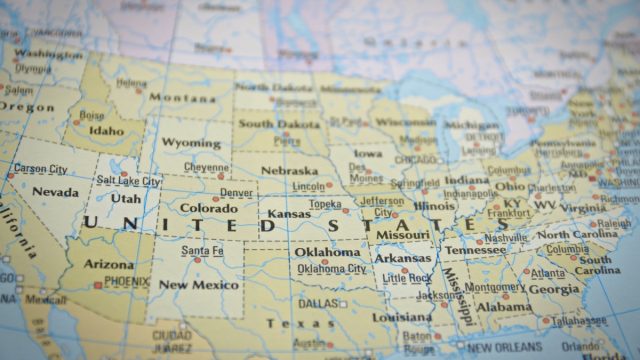These Were the Last States to Join the U.S.

In the summer of 1776, the United States Congress officially adopted the Declaration of Independence, thus forming the United States of America. However, the U.S.A. of 1776 looks very different from today’s America. Back then, there were only 13 states; today, obviously, there are 50, many of which weren’t granted statehood until well into the 20th century. Want to know which states are the youngest? Read on to learn more about the last U.S. states to join the Union. And for more American history lessons, check out these 30 Things in History Textbooks That Weren’t There Just 10 Years Ago.
Oklahoma (1907)
Oklahoma’s journey to statehood is complicated, to say the least. For decades, local and federal politicians alike argued over whether the territory should be made into a single state or two states, given the fact that the land was split up into Oklahoma Territory and Indian Territory. According to the Oklahoma Historical Society, Republican President Theodore Roosevelt signed the Oklahoma Enabling Act, making the Oklahoma territory a single state on June 16, 1906, simply because he feared that giving the Indigenous peoples their own state could lead to a Democratic majority. The two territories merged and officially entered the Union on November 16, 1907.
New Mexico (1912)
As its name suggests, New Mexico was part of the former Spanish colony (and later the independent country) Mexico up until 1848. It was then that, following the Mexican-American war, the Treaty of Guadalupe Hidalgo gave the U.S. a huge amount of land, part of which eventually became the majority of New Mexico. In 1854, the U.S. government bought the remainder of present-day New Mexico from the Mexican government in the Gadsden Purchase—and on January 6, 1912, the two pieces of land were officially made into one state.
Arizona (1912)
Arizona was the last of the 48 mainland states to achieve statehood. The Grand Canyon State was granted its state status on February 14, 1912, after Phoenix became one of the fastest-growing cities in the country. Previously, the land that comprises the state—which was given to the U.S. when it won the Mexican-American War—was made a U.S. territory in 1863, according to the official website of the state of Arizona.
Alaska (1959)
On January 3, 1959, Alaska was admitted into the Union as the 49th state. However, while today Alaska serves as an oil hub and a popular tourist destination, the majority of Americans were quite unhappy with the U.S. government when they purchased the land from the Russians in 1867 for some $7.2 million.
According to The New York Times, people referred to this 586,000-square-mile area as “Seward’s icebox”—that is, until 1896, when gold was discovered in the Yukon Territory and suddenly people became interested in what the vast land had to offer. During World War II, several military bases were established in Alaska in order to prevent a mainland attack—and largely because of these new bases, the U.S. government finally decided to make Alaska a state in 1959.
Hawaii (1959)
Hawaii became the 50th and final state on August 21, 1959. However, this group of islands was technically part of America long before that. According to the Roy Rosenzweig Center for History and New Media at George Mason University, Hawaii became a U.S. territory in 1898, and it was only after World War II—and a Hawaii-wide vote in which 94.3 percent of residents voted yes for statehood—that the United States decided the territory had earned state status. And if you love learning about the past, then don’t miss these 17 Crazy Historical Facts That Are Worth Repeating Over and Over.
To discover more amazing secrets about living your best life, click here to follow us on Instagram!